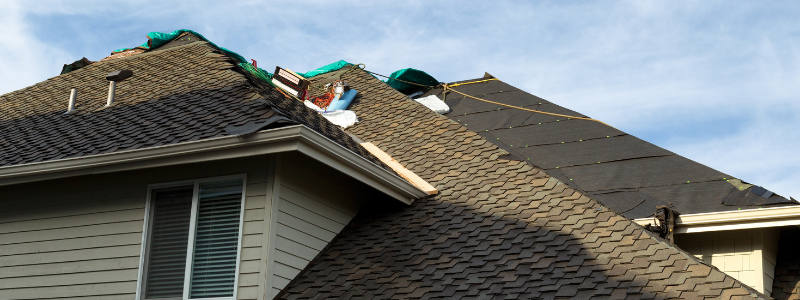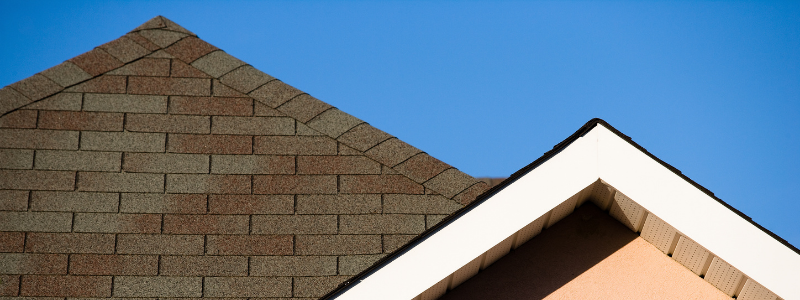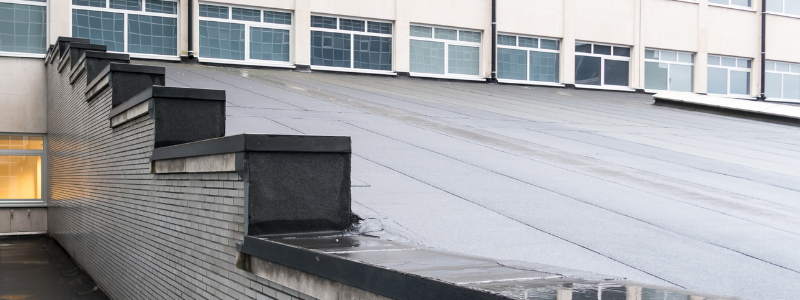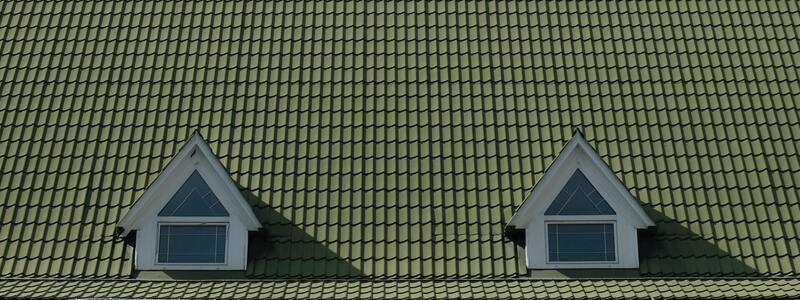
Common Roof Pitch
At B&M Roofing, we understand that a roof’s pitch is one of the most crucial aspects of roof design. It’s not just about how it looks; the pitch plays a vital role in how effectively water, ice, and snow are drained away. A well-considered roof pitch can also influence maintenance time and costs, making it a key factor in our recommendations. Additionally, the pitch can determine which materials are suitable for your roof. In Colorado, we often see specific pitches that work best for both commercial and residential properties. Let us help you select the ideal pitch for your roofing needs.

What is Roof Pitch?
The pitch is the slope, slant, or angle of your roof.
It is usually expressed as a rise in inches for every horizontal foot of length. So, a 6/12 roof would have a vertical rise of six inches per horizontal foot.
When architects design a roof’s pitch, they must consider several key factors: the weight of the roofing materials, the projected lifespan of the roof, the associated costs, the required maintenance, and the roof’s appearance.
Most Common Roof Pitch for Residential Buildings
Conventional slope roofs are most common with residential roofs.
This means the slope has a pitch between 4/12 and 9/12 on most homes.
Roofs with a pitch exceeding 9/12 are referred to as steep-slope roofs.
Steep-slope roofs are used for their aesthetic appeal and also offer several other benefits.
Most Common Roof Pitch for Commercial Buildings
Roofs on commercial buildings typically have a lower slope than those on houses.
A typical low-slope roof has a pitch between 2/12 and 4/12.
A roof slope of under 2/12 is considered flat. Technically, it does have some slope.
For drainage, the minimum slope must be at least ¼” per foot.
Designers of commercial buildings often use low-slope roofs because they are less expensive.
Low-slope roofs are often used on large buildings, such as factories and warehouses.

Why Opt For a Steeper Slope?
Steeper sloped roofs are visually pleasing. They also last longer because water doesn’t accumulate.
Water, melting snow, and ice will run off immediately. This prevents ice damming.
Steeper-sloped roofs are more expensive.
They require more materials and more labor. For some taller or larger structures, a steep slope isn’t practical.
Relationship Between Materials and Pitch
Roof material selection largely depends on the roof slope. Single-ply or torch-down roofs aren’t suitable for steep hills, while shingles and tiles aren’t recommended for low-slope roofs. Shingles and tiles perform well on slopes of 4/12 or higher.
Asphalt shingles are cost-effective but have a shorter lifespan of 20 to 50 years, depending on conditions. They are lightweight and versatile, making them popular in North America; however, special installation techniques are required for low-slope roofs (2/12 to 4/12).
Clay, natural slate, and concrete tiles offer durability and can last a lifetime when installed correctly. However, they are heavy (900 to 1,200 pounds per 100 square feet) and costly, with clay tiles priced between $6 and $10 per square foot, while slate is pricier.
Metal roofing, made from painted aluminum or steel, is lightweight (ranging from 40 to 135 pounds per 100 square feet) and suitable for any pitch. Aluminum is increasingly popular due to its resistance to rust and its ability to mimic other materials. It’s also eco-friendly and long-lasting, though costs vary.

Common Roof Pitch Mistakes
Pitching a roof too steep or too low for the building and Colorado climate is a common mistake.
A minimum slope of four units of rise per twelve units of run is crucial if you are using asphalt, wood, or tile shingles or shakes.
Another is choosing roofing materials that don’t match the roof slope. This can result in water leaking into your home or business.
- Failing to consider the winter climate can result in building water damage or even roof collapse.
Never assume that the slope that works on one home or business will work on all structures.
Colorado’s Unique Climate and Weather Patterns
Colorado experiences a unique climate and weather patterns that have a significant impact on roof design and pitch. Understanding these factors is crucial when considering the construction or renovation of roofs in the region.
Here are some essential points to note regarding Colorado’s climate and how it affects roof design:
- High Altitude Effects: Due to its higher altitudes, Colorado experiences variations in air pressure, solar radiation, density, oxygen levels, temperature, and atmospheric water vapor. These factors can lead to increased wear and tear on roofs, making routine maintenance essential for extending their lifespan.
- Winter Challenges: Colorado is renowned for its heavy snowfall, which poses the risk of ice dams. Ice dams form when melting snow is blocked from draining, leading to potential water damage. To prevent this, it’s crucial to have a roof pitch steep enough to allow water to drain effectively.
- Sun Exposure and UV Radiation: Colorado boasts approximately 300 sunny days annually. While this is appealing, it also means that roofs endure prolonged exposure to intense sunlight and UV radiation. This can accelerate the deterioration of roofing materials over time, making it crucial to choose appropriate materials that can withstand these conditions.
- Extreme Temperature Fluctuations: Colorado’s climate is characterized by significant temperature fluctuations, with hot summers and cold winters. These extreme temperature changes can cause the expansion and contraction of roofing materials, potentially leading to roof damage if not adequately accounted for during the design and installation process.
- Proper Insulation and Ventilation: Insulation and ventilation play a vital role in maintaining the durability and performance of roofs in Colorado. Proper insulation helps regulate indoor temperature and prevents heat loss. In contrast, adequate ventilation prevents moisture buildup and reduces the risk of condensation-related issues, such as mold and rot.
- Expert Guidance: Given the specific challenges posed by Colorado’s climate, it’s advisable to consult with roofing specialists who are knowledgeable about the region’s weather patterns and can provide guidance on optimal roof pitch, materials, insulation, and ventilation systems.

How Can B&M Roofing Help?
Your roof protects your family or your business. It needs to be installed with materials that fit the roof slope. We are familiar with the most common roof pitch in Colorado. We will recommend the best for your residential or commercial property.
Regular maintenance, including regular inspections, cleaning, and repairs, can extend the roof’s lifespan and prevent costly repairs. Business owners can follow these commercial roof maintenance tips to keep their commercial roofs in good condition, ensuring the longevity and performance of their buildings.
B&M Roofing’s roofing services offer exceptional expertise and experience in a wide range of roofing materials, including metal, shingles, tile, low-slope, asphalt, and more. We offer skilled, professional, and dependable roofing services in Colorado.
For more information about the best materials and installation for your roof pitch or to inquire about a free estimate, contact us now.




































